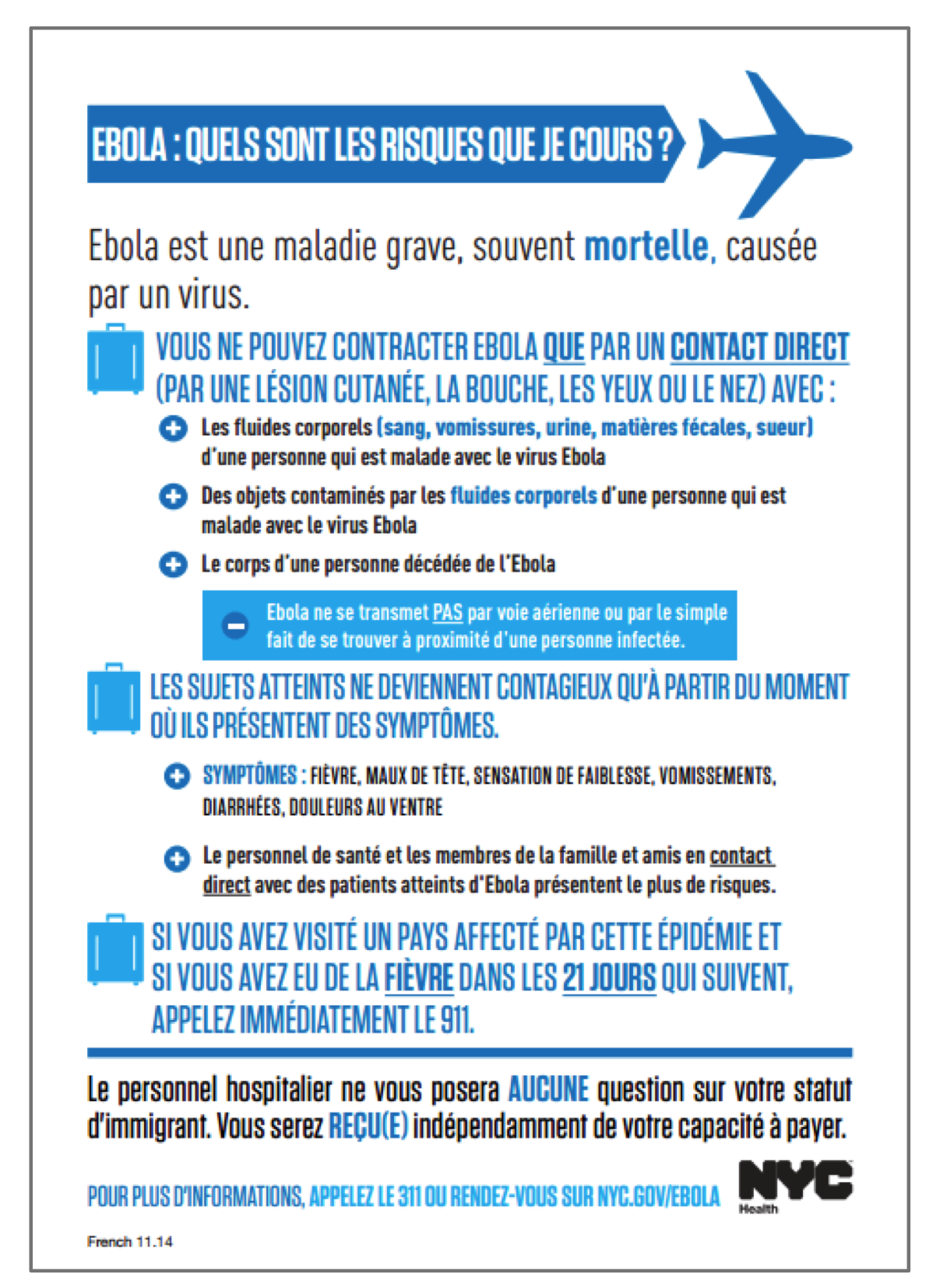May 16, 2016
SUMMARY

DOHMH distributed cards (available in nine languages) with information about EVD risks and transmission (DOHMH)
When the Centers for Disease Control and Prevention confirmed the first-ever case of Ebola Virus Disease (EVD) in the United States, New York City (NYC) quickly acted to educate the public about EVD and its associated risks. In support of this effort, the NYC Department of Health and Mental Hygiene (DOHMH) deployed community outreach teams to distribute informational materials and engage the public in discussions about EVD. Supported through $170,000 in Public Health Emergency Response funds, the teams’ efforts alleviated public fears and provided New Yorkers with practical information about how to protect themselves against spreading or contracting EVD. The community outreach teams offer other communities a successful model for sharing emergency preparedness information with the public.
DESCRIPTION
DOHMH initially formed community outreach teams shortly before Hurricane Sandy made landfall in October 2012. In 2014, DOHMH deployed the teams in response to EVD to share information about symptoms and risks with the public across NYC. The teams comprised of a total of 82 individuals with diverse cultural and linguistic backgrounds.
Taking into consideration the increased impact of EVD on citizens with family and friends in EVD-affected countries, the community
outreach teams’ priority was to target door-to-door outreach to neighborhoods with large West African populations. Where possible, DOHMH identified staff members fluent in the languages most commonly spoken in those neighborhoods. More broadly, the teams sought to make public messaging about EVD accessible to all populations in NYC. The teams distributed and produced over 60 types of educational documents translated into nine languages. Among the documents produced was a palm card entitled, “Ebola: Am I At Risk?” with information on how EVD is transmitted. The teams handed out more than 167,000 palm cards over the course of DOHMH’s public outreach campaign for EVD.
Additionally, the teams organized 100 community events over the course of three months. These events provided citizens with opportunities to receive answers to their questions and concerns about EVD. The community outreach teams brought physicians to the events in order to provide a trusted source for health information. The team also collaborated with elected officials citywide to bring them to town hall meetings and keep them informed of ongoing preparedness activities. In addition to hosting these meetings, the community outreach teams took advantage of existing events and other opportunities to distribute educational documents and speak with concerned citizens, such as participating in the annual African Day Parade and Festival.
The community outreach teams worked quickly to address heightened fears when NYC’s first and only EVD case was confirmed on October 23, 2014. The teams immediately went out to the neighborhood where the patient lived to circulate a letter from the DOHMH Commissioner reassuring residents and countering misinformation about ways that EVD is spread.
Through these efforts, the community outreach teams built trust with NYC residents, averted a public panic, and ensured that the populace was well-informed and prepared for EVD.
REFERENCES
Ebola Educational Materials; Accessed on November 4, 2015.
http://www.nyc.gov/html/doh/html/diseases/ebola-educational.shtml


